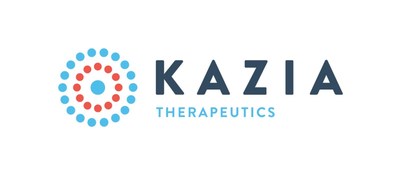US FDA Grants Rare Pediatric Disease Designation (RPDD) to Paxalisib for DIPG
Kazia Therapeutics Limited (ASX: KZA; NASDAQ: KZIA) has received Rare Pediatric Disease Designation (RPDD) from the FDA for its drug paxalisib, aimed at treating Diffuse Intrinsic Pontine Glioma (DIPG), a rare childhood brain cancer. This designation may enable Kazia to obtain a priority review voucher, valued between US$68 million and US$350 million, if paxalisib receives approval for DIPG. Positive preclinical data has been reported, with initial efficacy results expected in the second half of 2020. Currently, there are no FDA-approved treatments for DIPG, with a typical survival time of around 9.5 months.
- FDA granted Rare Pediatric Disease Designation to paxalisib for DIPG, enhancing development prospects.
- Potential eligibility for a priority review voucher could provide significant financial value if paxalisib is approved.
- Promising emerging preclinical data supports the drug's efficacy in treating DIPG.
- No FDA-approved treatments currently exist for DIPG, indicating a competitive and challenging market.
- The average survival from DIPG diagnosis is approximately 9.5 months, highlighting the urgency and challenges in treatment development.
SYDNEY, Aug. 7, 2020 /PRNewswire/ -- Kazia Therapeutics Limited (ASX: KZA; NASDAQ: KZIA), an Australian oncology-focused biotechnology company, is pleased to announce that the United States Food and Drug Administration (FDA) has awarded Rare Pediatric Disease Designation (RPDD) to Kazia's paxalisib (formerly GDC-0084) for the treatment of Diffuse Intrinsic Pontine Glioma (DIPG), a rare and highly-aggressive childhood brain cancer.
Key Points
- With RPDD granted, Kazia may now be eligible to receive a 'rare pediatric disease priority review voucher' (PRV) if paxalisib is approved for DIPG
- A PRV grants the holder an expedited six-month review of a new drug application by FDA. PRVs can be sold to other companies and have historically commanded prices between US
$68 million and US$350 million - RPDD has been awarded following positive emerging preclinical data in DIPG, and with initial clinical efficacy data expected in 2H CY2020; positive clinical data may substantially enhance likelihood of a potential future PRV
The FDA's RPDD program is intended to advance the development of drugs and biologics for certain serious and life-threatening rare pediatric diseases by providing incentives to industry. Most significant among these incentives is the potential access a priority review voucher at the time of a marketing authorization for the rare paediatric disease.
Kazia CEO, Dr James Garner, commented, "although glioblastoma remains our primary focus for paxalisib, we have been devoting increasing energy to developing the drug in childhood brain cancer as well. For patients diagnosed with DIPG, there are currently no FDA-approved drug treatments, and the average survival from diagnosis is around 9.5 months. The granting of RPDD by the FDA recognises our efforts and achievements so far and leaves us well placed to move paxalisib forward as a potential therapy for DIPG. We continue to be inspired by the dedication of our collaborators in this field and are committed to understanding whether paxalisib may be able to help in this enormously challenging paediatric disease."
Rare Pediatric Disease Designation
The Food and Drug Administration Safety and Innovation Act (2012) established FDA's RPDD initiative. RPDD may be granted to drugs in development for diseases which primarily affect children (under the age of 18 years), have an incidence of less than 200,000 new cases per annum in the United States, and which are serious or life-threatening.
A sponsor of a drug with RPDD may request a Rare Pediatric Disease Priority Review Voucher (PRV) at the time of a marketing application to FDA. In effect, the PRV shortens the FDA review period for a future marketing application of any drug from 12 months to 6 months. PRVs can be sold to other companies and have historically been transacted at prices in the tens to hundreds of millions of dollars. For a large company launching a billion-dollar drug, the six-month acceleration in regulatory review can be of substantial economic value. In 2019, five pediatric PRVs were granted by FDA.
Phase I Clinical Trial in DIPG
In October 2018, St Jude Children's Research Hospital in Memphis, TN commenced a phase I clinical trial of paxalisib in DIPG (NCT03696355). This study reported favourable top-line safety data in September 2019 and established 27 mg/m2 as the maximum tolerated dose for paediatric use. The study has completed recruitment, and initial efficacy data is anticipated during the second half of calendar 2020. This data will be used to guide future development of paxalisib in this disease.
Preclinical Research in DIPG
Dr Matt Dun and colleagues at the University of Newcastle, Australia have conducted extensive laboratory research with paxalisib, focused on phosphoproteomic analysis of its activity in DIPG cell lines. Phosphoproteomics is a new approach in cancer research that attempts to discern how complex signaling pathways are modified in tumours. Work at the Dun laboratory has shown paxalisib to be broadly active in DIPG and has identified a number of potential combination strategies which may enhance its activity. Initial data was presented at the Society for Neuro-Oncology (SNO) Pediatric Neuro-Oncology Basic and Translational Research Conference in San Francisco, CA, in May 2019.[1] Further ongoing work in animal models is expected to provide additional insight.
In parallel, related laboratory research is underway in the DMG Research Center at the University of Zurich, Switzerland, under the leadership of Dr Javad Nazarian. Dr Nazarian is also the principal investigator at Center for Genetic Medicine within the Children's National Medical Center, Washington DC with a focus on DIPG. Laboratory research is also being conducted at St Jude Children's Research Hospital by Dr Chris Tinkle and Dr Suzanne Baker and colleagues, in parallel to the ongoing phase I clinical trial at that center.
Next Steps
Kazia anticipates that initial efficacy data from the ongoing phase I study at St Jude will be available during 2H CY2020. Future clinical research directions will be determined on the basis of this data, in close consultation with collaborators.
About Kazia Therapeutics Limited
Kazia Therapeutics Limited (ASX: KZA, NASDAQ: KZIA) is an innovative oncology-focused biotechnology company, based in Sydney, Australia. Our pipeline includes two clinical-stage drug development candidates, and we are working to develop therapies across a range of oncology indications.
Our lead program is paxalisib (formerly GDC-0084), a small molecule inhibitor of the PI3K / AKT / mTOR pathway, which is being developed to treat glioblastoma, the most common and most aggressive form of primary brain cancer in adults. Licensed from Genentech in late 2016, paxalisib entered a phase II clinical trial in 2018. Interim data was reported most recently at AACR in June 2020, and further data is expected in 2H 2020. Paxalisib was granted orphan designation for glioblastoma by the US FDA in February 2018, and rare pediatric disease designation for DIPG in August 2020.
TRX-E-002-1 (Cantrixil), is a third-generation benzopyran molecule with activity against cancer stem cells and is being developed to treat ovarian cancer. TRX-E-002-1 has completed a phase I clinical trial in Australia and the United States with the final data expected in the second half of calendar 2020. Interim data was presented most recently at the AACR conference in June 2020. Cantrixil was granted orphan designation for ovarian cancer by the US FDA in April 2015.
This document was authorized for release to the ASX by James Garner, Chief Executive Officer, Managing Director.
[1] R Duchatel et al. (2019) Neuro-Oncology, 21(Suppl.2):ii68
![]() View original content to download multimedia:http://www.prnewswire.com/news-releases/us-fda-grants-rare-pediatric-disease-designation-rpdd-to-paxalisib-for-dipg-301108185.html
View original content to download multimedia:http://www.prnewswire.com/news-releases/us-fda-grants-rare-pediatric-disease-designation-rpdd-to-paxalisib-for-dipg-301108185.html
SOURCE Kazia Therapeutics Ltd
FAQ
What is the significance of the FDA's Rare Pediatric Disease Designation for KZIA?
What is paxalisib being developed for by Kazia?
What financial benefits could Kazia gain from the Rare Pediatric Disease Designation?








